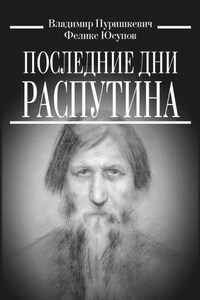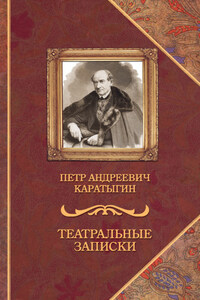Title Page
Map: Apartheid South Africa
Introduction
Prologue: The Last Hero
Part I: 1918–1964
1 Country Boy: 1918–1934
2 Mission Boy: 1934–1940
3 Big City: 1941–1945
4 Afrikaners v. Africans: 1946–1949
5 Nationalists v. Communists: 1950–1951
6 Defiance: 1952
7 Lawyer and Revolutionary: 1952–1954
8 The Meaning of Freedom: 1953–1956
9 Treason and Winnie: 1956–1957
10 Dazzling Contender: 1957–1959
11 The Revolution that Wasn’t: 1960
12 Violence: 1961
13 Last Fling: 1962
14 Crime and Punishment: 1963–1964
Part II: 1964–1990
15 Master of my Fate: 1964–1971
16 Steeled and Hardened: 1971–1976
17 Lady into Amazon: 1962–1976
18 The Shadowy Presence: 1964–1976
19 Black Consciousness: 1976–1978
20 Prison Charisma: 1976–1982
21 A Family Apart: 1977–1980
22 Prison Within a Prison: 1978–1982
23 Insurrection: 1982–1985
24 Ungovernability: 1986–1988
25 The Lost Leader: 1983–1988
26 ‘Something Horribly Wrong’: 1987–1989
27 Prisoner v. President: 1989–1990
Part III: 1990–1999
28 Myth and Man
29 Revolution to Cooperation
30 Third Force
31 Exit Winnie
32 Negotiating
33 Election
34 Governing
35 The Glorified Perch
36 Forgiving
37 Withdrawing
38 Graca
39 Mandela’s World
40 Mandela’s Country
41 Image and Reality
Afterword: Living Legend, Living Statue
Source Notes
Select Bibliography
Searchable Terms
About the Author
Praise
Other Books by Anthony Sampson
Copyright
About the Publisher
I am conscious of both the unusual opportunity and the responsibility in undertaking this book. When I wrote to President Mandela in 1995 suggesting an authorised biography he invited me to breakfast in his house in Johannesburg, and told me he would like me to write it because of our long friendship – ‘Provided,’ he joked, ‘that you don’t mention that we first met in a shebeen.’ He reminded me that he had read my book Anatomy of Britain when he was awaiting trial in 1962. He promised to discuss critical questions with me, to try to ensure that the facts were accurate, and to let me see relevant letters and documents. But he would leave me free to make my own judgements and criticisms: it was important, he said, for the movement to learn from mistakes; and, he insisted, ‘I’m no angel.’
It had been my good luck to have first known Mandela in Johannesburg in 1951, and to have seen him at several decisive moments over the next decade before he went to prison. I first encountered him after I had come out to South Africa to edit the black magazine Drum, which opened all doors into the vibrant and exciting world of black writers, musicians and politicians in the Johannesburg in which Mandela moved, and gave me a front seat from which to observe the mounting black opposition to the apartheid government which had come to power in 1948. I attended the ANC conference which approved the Defiance Campaign of 1952; I watched Mandela organising the first volunteers, and mobilising resistance in 1954 to the destruction of Sophiatown, the multi-racial slum where I had spent many happy evenings. In 1957 I saw him frequently at the Treason Trial, about which I later wrote a book; and in 1960, as a correspondent of the Observer, I covered the Sharpeville crisis and interviewed Mandela in Soweto just after the massacre. My last, poignant sight of him was in 1964, when I was observing the Rivonia trial in Pretoria, which gave me a chance to see the final speech he was then preparing (see pp. 192–3). As a journalist I could not see Mandela during his twenty-seven years in prison, but I revisited black South Africa and kept in touch with exiles in London and elsewhere. In the mid-1980s, when the conflict was escalating, I saw much of Oliver Tambo, the ANC President, in London, and arranged meetings for him with British businessmen. I also talked often to Winnie Mandela by telephone. I returned to Johannesburg for the crises of 1985 and 1986, preparing a book about black politics and business, Black and Gold, before the South African government in 1986 banned me from returning. My ban was temporarily lifted just in time for me to return before Mandela’s release from jail in February 1990; later, I visited him twice a week in his Soweto house. Over the next four years I saw him many times, both in London – where he asked me to introduce him at fund-raising receptions – and in Johannesburg, to which I often returned, and where I watched the elections of April 1994.
Since beginning this book I have made several journeys through South Africa with my wife Sally, trying to piece together the jigsaw of Mandela’s varied life, while immersing myself in the fast-changing contemporary scene. I have seen President Mandela in contrasted settings: in his offices and mansions in Pretoria and Cape Town, in his own house in Houghton, on Robben Island, at banquets and conferences, in Parliament in Cape Town, at the UN in New York or at state occasions in London. I have travelled to the Great Place where he was brought up in the Transkei, and to his new house in Qunu. I have talked to scores of his old friends and colleagues, but also to his former opponents, whether warders, officials or political leaders – including ex-President P.W. Botha in Wilderness, ex-President F.W. de Klerk in Cape Town, and the former Foreign Minister Pik Botha in the Transvaal.








